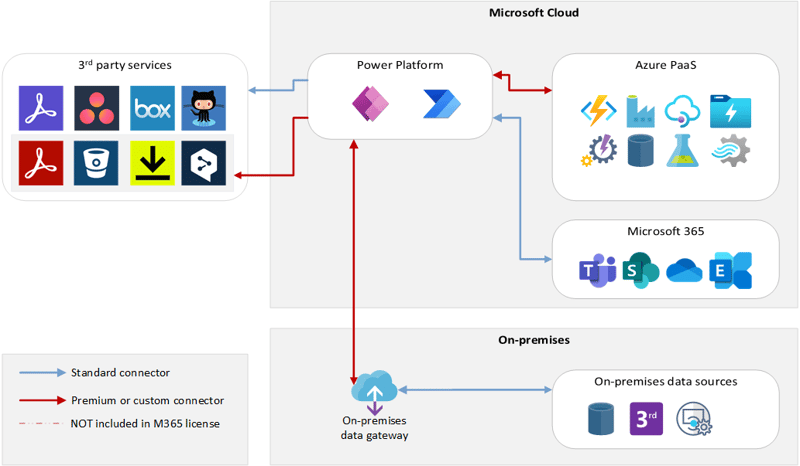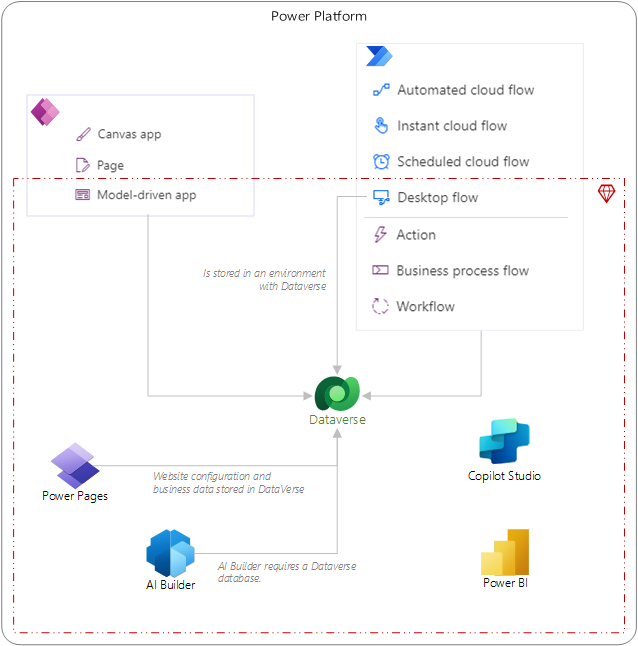A Power Platform seeded license refers to indirect licensing rights that you get from another license. The seeded licenses included with Microsoft 365 give limited Power Platform use rights, allowing users to customize and extend Microsoft 365 and Office 365 for productivity scenarios.
What causes solution to become "premium"
If your Power App or Cloud Flow is accessing M365 services, the solution does not require additional licensing.
However, if your solution needs to access any of the services below, it will need an additional license:
✅ Azure services (including databases)
✅ on-premises services or resources (via on-premise data gateway)
✅ 3rd party Premium connectors
✅ custom connectors (so no, you cannot avoid paying premium licenses by getting rid of built-in Premium connectors and writing them on your own 🙃)
Power Platform "premium" capabilities
Additionally, some Power Platform capabilities require additional licensing:
✅ Dataverse
✅ Model-driven apps
✅ Business process flows, classic workflows
✅ Desktop flows
✅ Power Pages
✅ Power BI (UPDATE 2024.07.17: Power BI is currently available as part of the Office 365 Enterprise E5 version, see Power BI service description for feature availability
✅ AI Builder
✅ Copilot Studio
Premium features included in Power Apps for Teams
It wouldn't be Power Platform if things were so easy 😊
Apart from embedding regular Power Apps into Teams, we can also build Power Apps for Teams">Power Apps for Teams.
They come with a Microsoft Dataverse for Teams does not require additional licensing for users with M365 license, which is a limited version, with less Dataverse capacity and less capabilities.
For a list of all limitations see:
- Power Apps for teams | Known issues and limitations
- Limitations of controls in Teams
- Microsoft Dataverse for Teams
- ow are Dataverse for Teams and Dataverse different?
Let me list a few that I deem important:
- Even though you have a Dataverse in the backend, you can only build Canvas Apps. Mo model-driven apps in Power Apps for Teams
- No AI Builder
- No Power Apps component framework. You can, however, use low-code components, and also import them from a component library
- Apps embedded in Teams are required to load within 30 seconds; after that Teams assumes that the app has timed-out, and will display an error screen.
- Barcode, Camera, Microphone controls aren't supported in Teams Mobile (Limitations of specific controls)
- Dataverse for Teams
- only supports up to 1 million rows and up to 2GB data
- no Mobile offline (that's the new, improved, offline capability)
- no Virtual Tables
- no Business Rules, Calculated or Rollup columns (you can still use Formula column though)
- no API access, no Plug-ins
- no Dataflows from Dataverse (Dataflow IN is supported)
- no Auditing or Activity loading,
- and so on =)
It's certainly quite a list, but I still see a massive value of using this "for Teams" edition of Power Apps. It provides simple data storage without a need of creating Microsoft Lists for storage, which simplifies solution implementation and deployment.




















